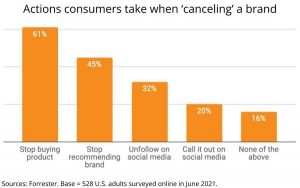Should merchandising and marketing fall under the same umbrella in the new retail paradigm? Contributor Rohit Gupta says yes, explaining how increasing access to data is transforming how retailers can respond to consumers.

News of a major retailer shaking up its organizational structure isn’t usually considered news. But a few months ago, a large electronics retailer announced plans to restructure its marketing team under a different kind of CMO: its Chief Merchandising Officer.
While Best Buy’s move to streamline the department may have in part been motivated by cost reduction, it more importantly reflects marketers’ and merchandisers’ new relationship with customer data — and each other. It’s a trend we’ll likely see more of in the years, and even months, to come, as we head into the all-important holiday season.
On the surface, these things seem entirely unrelated. Why would an organizational shift of senior executives have an impact on customer data? Because digital transformation is leading to massive changes in the retail industry, and disruption is evident at every touch point from product discovery to customer management. To remain agile, retailers must utilize customer data — such as online purchase history and public sentiment via social — to provide users with seamless and customized shopping experiences.
Retailers are best positioned for success when merchandising and marketing teams take a customer-centric approach to provide products and services that truly meet their customers’ needs.
Here’s how:
Merchandisers and marketers can no longer operate in silos
Traditionally, retail merchandisers and marketers have boasted very powerful, yet separate responsibilities, like kings of product ruling separate kingdoms. Merchandisers would decide on the product assortment and purchasing experience to dictate consumer choices, creating price promotion pressure on manufacturers when excess inventory existed. And they rarely captured constructive feedback from end consumers, ensuring future purchase orders would be based on historical trends.
Marketing teams would shape product branding and deploy extensive capital pushing advertisements and promotions to attract customers, while often not fully understanding why conversions were single-digit at best. Alternatively, marketers attempting to connect with customers by creating an emotional response to a brand or product would risk miserable failure if they didn’t hit the bull’s-eye.
Customer data brings together product, pricing and promotions
To become a customer-driven merchandising organization, retailers need to disrupt their internal processes by shifting to an algorithmic approach. Placing the customer data at the forefront of all decision-making allows retailers to respond to customer needs with tailored offerings.
By utilizing tools that combine macro trend and social sentiment tracking at the individual product level, companies can accurately forecast demand, pinpoint the exceptional experience a customer is seeking and prioritize product feedback. This data allows merchandisers to be constantly aware of customer needs and pivot the product assortment to reduce inventory and price discounting — thereby maximizing revenue potential and becoming collaborators to manufacturing by providing them with constructive feedback on products.
Marketers can take advantage of this data by amplifying individual customer voices through influencer campaigns, which put real human faces to branded marketing efforts to cultivate greater connection and authenticity. Marketers furiously spending capital on social media advertisements attempting to generate as many “likes” as possible won’t likely see new revenue growth. Focusing solely on influencers and using a “pull” mechanism to create relevant campaigns has a far greater return on investment than spending money on generic social media marketing.
Organizations must become data-driven in order to thrive
The two-way conversation is more influential than ever before. In the age of social feedback, it is collective customer purchasing power that ultimately decides the value and the acceptable cost of the product, not retailers or manufacturers.
It is imperative to differentiate your organization through better data. Marketing and merchandising leaders must actively listen to customers, which they can only do through generating data insights and acting on them in real time. If retailers don’t pivot their structure accordingly, the behemoth Amazon — along with other companies that are becoming truly data-driven — will continue to eat their lunch.
Companies’ ability to collect and analyze customer data is generating solutions that can provide better customer experiences. The best way to execute against these insights is by uniting the marketing and merchandising teams — a transformation driven by access to this data. As such, retailers must rethink and refocus their digital transformation strategy to embody a consumer-centric approach, one that allows for a 360-degree view across the entire organization.
Some opinions expressed in this article may be those of a guest author and not necessarily Marketing Land. Staff authors are listed here.
Marketing Land – Internet Marketing News, Strategies & Tips
(72)





